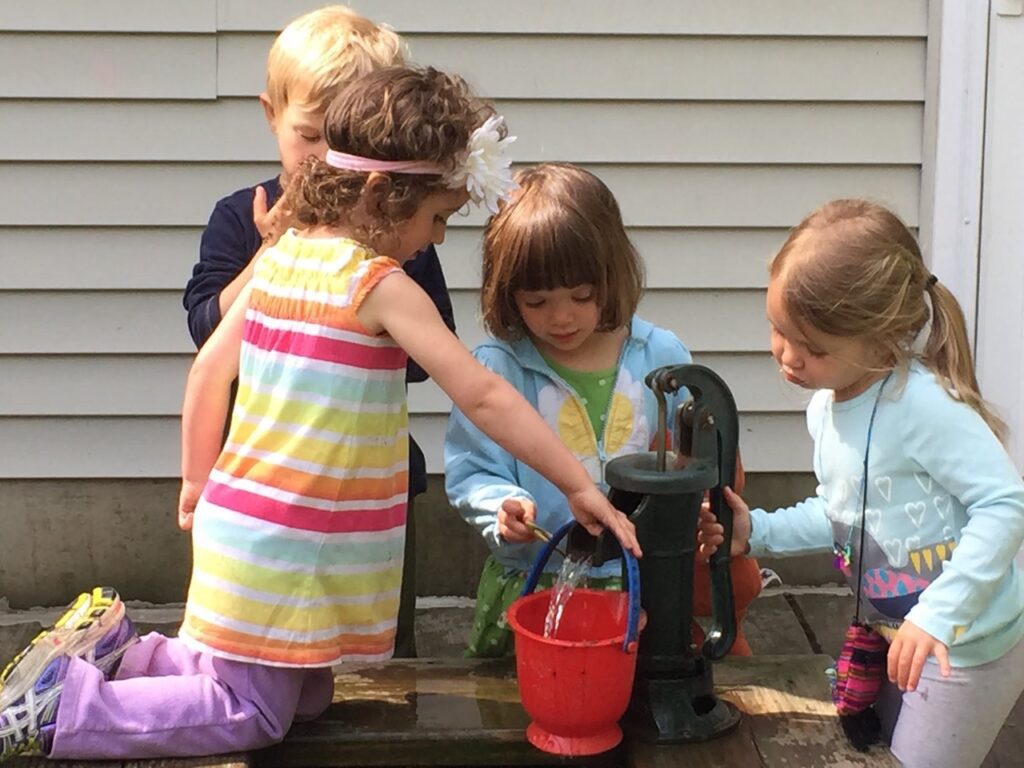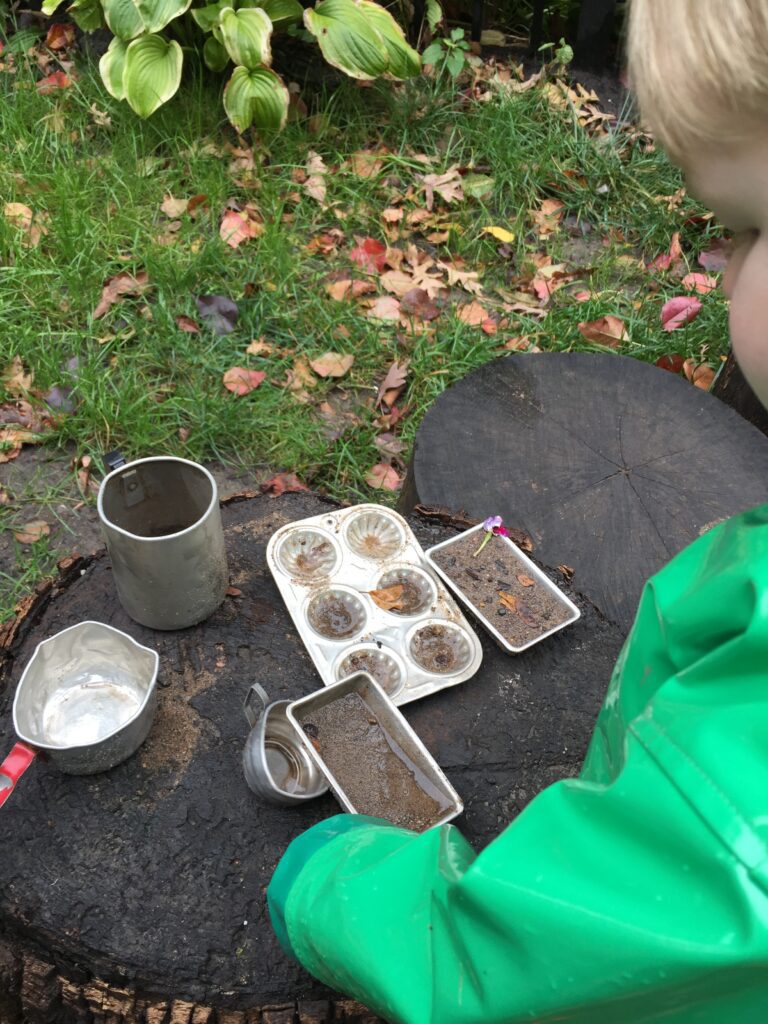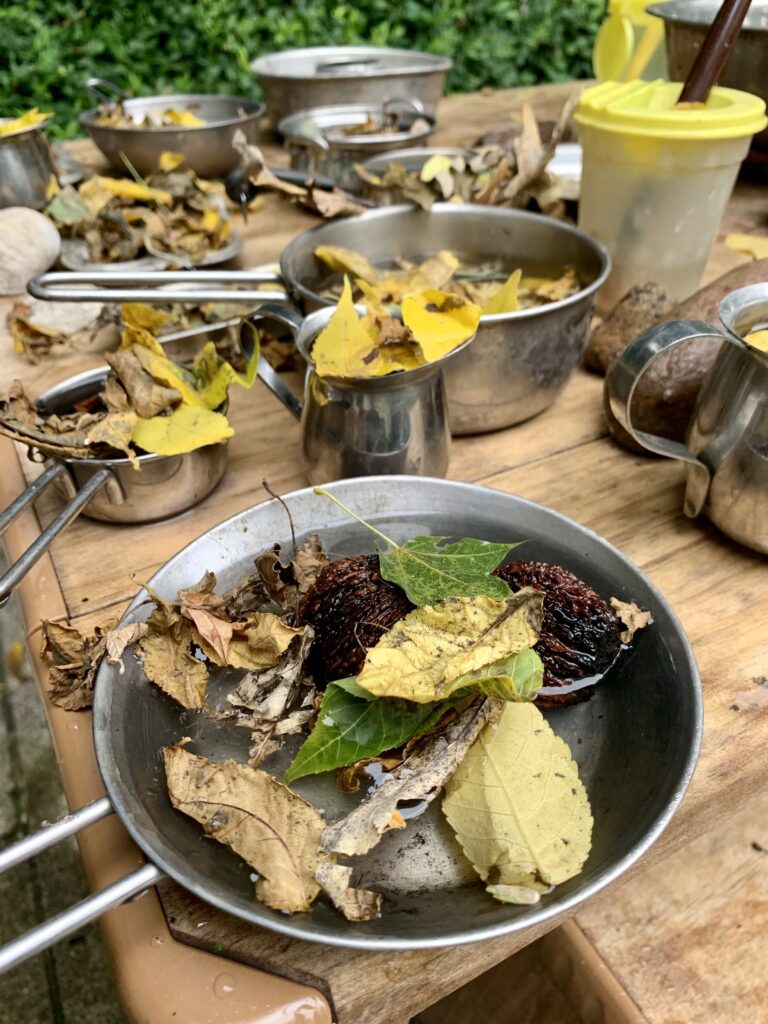The Power of Magic Potions
Who wants to make magic potions with me?” asks five-year-old Katie.
“Do you really know how to do that? Annika asks, hopping off of her swing to see what adventures Katie's magic potion proposition might bring.

“You mix things up, like potions or recipes," Katie explains. "Sometimes things change colors or the mixture gets really thick and gooey. It’s an experiment. You don’t know what will happen until you mix stuff up and find out!”
Annika’s eyes widen with intrigue as she ponders the possibilities. “Ok, I’ll play! What do we need?“
“Water, walnuts, flowers, acorns... anything you want!” says Katie.
The hunt is on for containers, loose parts and, of course, water!

Katie is the quintessential "cause-and-effect" kid. She's always one step ahead of us, asking herself, “What if I added….”
Whether we're baking muffins in the kitchen or painting at the table, she's always experimenting—adding and mixing and exploring other possibilities. She loves to mix dry ingredients with small amounts of water and then add a wee bit more water to study the change in texture.
Katie's investigations are joyous, messy and sometimes exhausting. But she brings so much more to the table than a little messiness.

Learning happens when children interact and collaborate.
“I've collected lots and lots of cups of water!" exclaims Annika, Katie's self-appointed "lab assistant." "Can we start mixing things now?”
I watch as our youngest friend, Anderson, quietly joins the water gang to play alongside the older children.
“Here, Anderson, add some sand to that and mix it all up!” Katie instructs.
Katie is modeling the scientific process for the other children, and her enthusiastic pursuit of knowledge is igniting a love of learning in them all.

Free play with water builds an important foundation for later STEM learning.
Our STEM explorers are investigating the physics of flow and motion and the chemistry of solutions and cohesion as they develop an understanding of early math concepts such as volume and measurement.
When children design experiments like these, they are beginning to inquire, observe, compare, invent and theorize.
STEM discovery happens when children ask questions, solve problems and draw conclusions. We have cause and effect and data analysis as the children test out new ideas and theories.
What looks like simple play is actually early science and math skills and knowledge in the making.

I love water play because it's always developmentally appropriate. Regardless of a child's age, vocabulary or developmental stage, water levels the playing field.
Social and vocabulary skills grow as younger children play with older friends. Water play encourages collaboration, concentration, perseverance, self-regulation and more.
Water also provides a rich sensory learning experience as children explore their environment through hands-on discovery and play.

Children who participate in active investigations are engaging in the work of real scientists!
Through play with loose parts, children use curiosity, persistence and motivation to answer questions, solve problems and test out their theories to find their own answers.

This is what child-led learning looks like. Let's play!